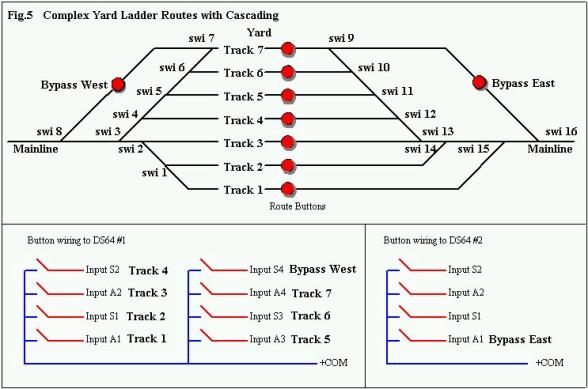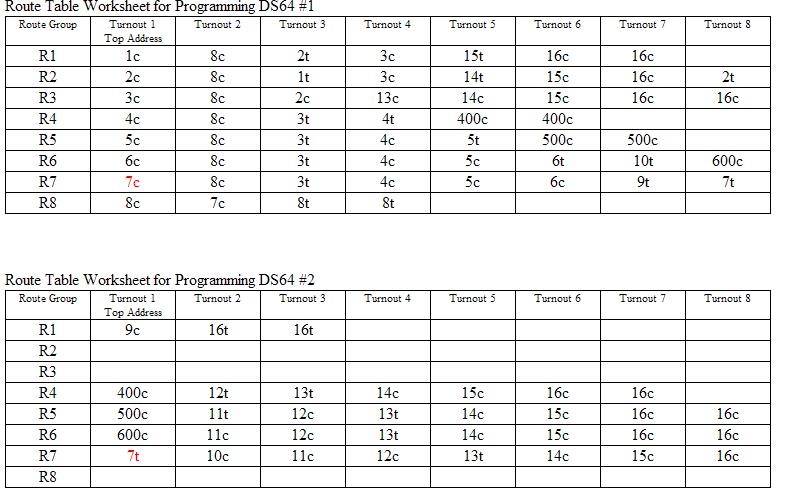A cascaded route is where the last command of a route triggers the next route; this is also known to some as a nesting route.
With the capacity of 8 turnouts per route, it becomes necessary to cascade routes if more than 8 turnouts are involved in a route.
To highlight these possibilities, we use a very complex scenario with many turnouts and possible routes. Cascading routes allows the setup of long routes without the need for a computer. Since some routes exceed the capacity of 8 turnouts, the remaining turnouts of the long routes are setup in the second DS64 or third DS64.
Cascadede Routes are only possible from a route in one DS64 to a route stored in another DS64; they cannot be used on the same DS64.

This example uses 4 DS64s to control a total of 16 turnouts with 9 route buttons. The routes can also be triggered by a throttle switch command or with a computer. The sensor inputs of the first DS64 and the first sensor input of the second DS64 are used for the route push-buttons for panel route control.
DS64 #3 and 4 are used only for turnout setting. The board addresses are set to 1 to 4 while the switch addresses are programmed in sequence from 1 to 16. We will generate one route for each track. Route 4,5,6 and 7 will demonstrate the effect of cascading routes where the last turnout command in the route is also the top address of the cascaded route.

Preferably, all routes are triggered with a closed command to eliminate confusion. The final state of route 7 and some other routes require the top address to be in the “thrown” position for that route to be correct. Therefore you simply add a thrown command for that address within or at the end of the route or use the cascaded top address to set to the correct state as shown with route 7.
There are 15 turnouts in that route and no room for a virtual address like 400, 500 and 600 on the previous routes. Remember, when you use a virtual top address, your route capability is reduced to 7 turnouts.
Note: When using multiple DS64s or when other feedback devices such as the DS54, BDL16x or SE8c are connected to LocoNet, it is very important that each DS64 has its own unique Board ID programmed to avoid conflicts. The board ID on the DS64 is completely independent from the turnout addresses programmed for its 4 outputs.